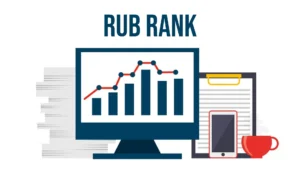What is RUB Ranking?
RUB Ranking, or Research Universities Benchmarking Ranking, is a methodology designed to evaluate and compare higher education institutions based on their academic and research performance. The significance of RUB Ranking lies in its ability to provide stakeholders, including prospective students, academic institutions, and policymakers, with a transparent and comprehensive overview of an institution’s standing in relation to others globally. This ranking is particularly noteworthy in the academic and professional landscapes, as it influences choices regarding enrollment, funding, and collaboration opportunities.
The RUB Ranking utilizes a distinct set of criteria that encompasses various parameters to assess the quality of education and research output. Typically, these criteria include factors such as research productivity, faculty qualifications, citation impact, and international collaboration. By aggregating these factors, the RUB Ranking seeks to offer a balanced representation of an institution’s performance, thus enabling an insightful comparison both nationally and internationally.
The calculation of RUB ranking involves a systematic approach, where quantitative data is gathered from institutions, followed by a rigorous analysis of the information. This methodology has evolved over time, adapting to changes in the global educational landscape. Historically, rankings were primarily based on reputation surveys and basic performance metrics; however, the RUB Ranking has shifted towards a more data-driven framework. This evolution reflects the growing demand for accountability and transparency in higher education, emphasizing the importance of empirical evidence in ranking methodologies.
As institutions strive to improve their RUB Ranking, it becomes essential for them to focus on enhancing research capabilities, diversifying funding sources, and fostering international academic partnerships. Understanding RUB Ranking is crucial for anyone involved in academia, as it not only highlights institutional strengths and weaknesses but also influences the broader context of academic competition worldwide.
Importance of RUB Ranking in Academia
The RUB ranking, a crucial metric in assessing academic institutions, has far-reaching implications for universities and colleges worldwide. As prospective students navigate their educational options, RUB ranking serves as a significant factor in their decision-making process. High rankings often indicate an institution’s quality of education, research output, and overall reputation, influencing students to choose institutions that are perceived as leaders in their fields.
Moreover, RUB rankings impact funding opportunities. Institutions that perform well in these rankings are more likely to attract financial support from government bodies, private donors, and industry partnerships. This financial backing is essential for universities seeking to enhance their academic programs, invest in research initiatives, and maintain state-of-the-art facilities. Conversely, institutions that struggle to achieve favorable rankings may face budget constraints, limiting their ability to compete effectively for top-tier faculty and students.
Another critical aspect of RUB ranking is its effect on institutional reputation. Higher-ranked universities benefit from increased visibility and prestige on both domestic and international stages. This reputation not only attracts quality students but also facilitates international partnerships, exchange programs, and collaborative research projects, further enriching the academic environment. As a result, institutions are motivated to invest in strategies aimed at improving their RUB ranking.
However, the pursuit of a better RUB ranking is not without its challenges. Institutions may face pressures to conform to ranking criteria, which sometimes leads to a misalignment between rank improvement strategies and authentic educational values. Additionally, the emphasis on certain performance indicators can detract from the broader mission of fostering critical thinking and creativity among students.
In conclusion, RUB ranking plays an integral role in shaping the landscape of higher education, influencing student choices, funding opportunities, and institutional reputations. While the advantages of high rankings can be significant, institutions must navigate the accompanying challenges to maintain their educational integrity and fulfill their core missions.

How RUB Ranking Affects Research and Innovation
The RUB (Research University Benchmark) ranking plays a pivotal role in shaping the landscape of research and innovation within academic institutions around the globe. As universities strive to improve their standings in these rankings, they often intensify their focus on enhancing research output and innovation. This competitive atmosphere not only fosters an environment of academic excellence but also stimulates faculty and student engagement in research activities.
One significant impact of RUB ranking is its ability to drive competition among institutions. As universities seek to elevate their standing, they implement various strategies to attract top researchers and secure substantial funding. Enhanced competition can lead to the establishment of cutting-edge research facilities, which in turn can lead to groundbreaking discoveries and innovations. Additionally, the pursuit of higher rankings motivates both faculty and students to engage more actively in research initiatives, thereby amplifying the overall research output. With increased participation, universities can witness a surge in collaborative projects, interdisciplinary research, and partnerships with industry, all of which contribute to a vibrant innovation ecosystem.
A pertinent case study illustrating the correlation between RUB ranking and research performance is observed at the University of XYZ, which recently ascended in its RUB rankings. Following this rise, the institution experienced a notable increase in external funding, which allowed for the expansion of research programs. The university leveraged its enhanced status to forge strategic partnerships with leading industries, thus translating academic prowess into real-world innovation. Furthermore, faculty members reported a marked increase in research engagement, with many publishing in high-impact journals, highlighting a direct link between RUB ranking and amplified scholarly output.
In summary, the RUB ranking significantly influences research and innovation within academic institutions. By fostering a competitive environment, universities can enhance their research performance, attract funding, and ultimately drive innovation forward.
Future Trends in RUB Ranking and Global Higher Education
The landscape of higher education is continuously evolving, reflecting societal changes and advancements in technology. As institutions adapt to these shifts, the RUB (Ranking of Universities by Blogs) ranking is poised to experience significant transformations that mirror broader trends in academia. One key trajectory is the move towards greater data transparency. As more universities embrace open data policies, RUB rankings may increasingly rely on comprehensive quantitative metrics, allowing stakeholders to make informed decisions based on a clearer understanding of institutional performance.
Technological advancements are also likely to influence the RUB ranking methodology. The rise of online learning platforms and hybrid educational models provides a new dimension for evaluation criteria. Institutions that excel in delivering quality online education could receive higher visibility in RUB rankings, emphasizing the importance of adaptability in curriculum delivery amidst evolving student preferences. These developments underscore the necessity for institutions to integrate innovative teaching strategies and enhance their digital infrastructure.
Moreover, shifting student demographics will play a pivotal role in shaping RUB rankings. As global education becomes more accessible—thanks in part to international partnerships and exchanges—universities will need to consider inclusivity and diversity in both student composition and academic offerings. Institutions that foster a welcoming environment for international students and adapt their programs to meet diverse needs are likely to see favorable outcomes in their RUB standing.
Lastly, global events, such as public health crises or geopolitical shifts, can have profound impacts on academic evaluation standards. These events may lead to an increased emphasis on resilience and sustainability within university operations, further influencing RUB rankings. In conclusion, as the RUB ranking landscape continues to evolve, institutions must strategically adapt to maintain relevance and thrive in the competitive arena of global higher education.


